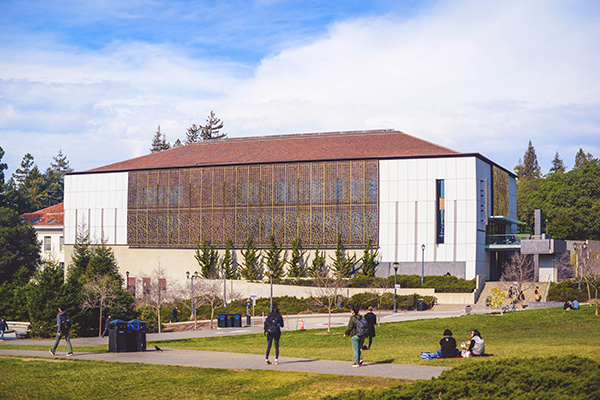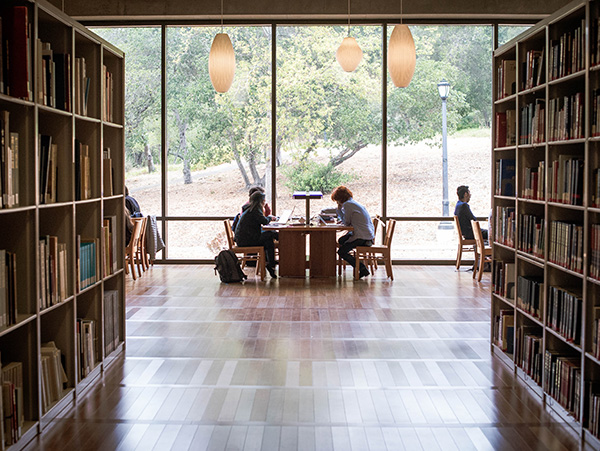
C. V. Starr East Asian Library director Peter Zhou envisioned a different type of library for Berkeley’s collection of East Asian materials. “I wanted an open flow of people, ideas, learning, and energy – without a lot of partitions,” Zhou explains.
As the building heads into its tenth year, the success of the space can be measured by its popularity — Berkeley students rank the heavily-used C. V. Starr East Asian Library as one of the premier study spots on campus. And the library’s architects, Billie Tsien and Tod Williams, recently garnered another big vote of approval when they were selected from more than 140 firms to design the Obama Presidential Center.
Tsien and Williams, a husband and wife team, focus on work for museums, schools, and nonprofits. They have each been awarded the National Medal of Arts, and have received more than two dozen awards from the American Institute of Architects.
The design of the Starr Library, which will have its ten-year anniversary in 2018, expresses an Asian cultural perspective in both large and small ways. From the outside, the monumental bronze screen that faces Memorial Glade, on the building’s south wall, is the most apparent.
Inside, a visitor is immediately struck by the open design of the space, the filtered yet abundant light, and the range of textures – from concrete and stone to wood, fabric, and art.

“The Gardner Stacks in Doe were one model for the open design,” Zhou notes. “In Starr, a multifaceted flow unites the collection stacks, reading rooms, and the reference and circulation areas.”
A central staircase uniting all four levels serves as the main artery of the building. On the ground floor, tapestries and art drawn from rare books in the collection soften the concrete walls.
Tsien and Williams worked to both fulfill the functional needs of the library together and to create an aesthetically satisfying building. University guidelines for this area of campus (known as the “classical core”) required a pitched clay tile roof, symmetrical façade and use of white granite.
A priority for the design was to avoid direct sun exposure while creating a building with an abundance of natural light. The bronze screens on the three sides of the building are part of the solution. An innovative skylight took care of the rest.
By adding angled drywall beneath the skylight, sunlight is reflected and diffused through the building. As Zhou puts it, “Our library is bathed in two layers of light, one coming through the skylight, the other cascading and bouncing down to different areas. I often see Berkeley architecture students drawing our interior.”
The C.V. Starr East Asian Library was funded primarily by private support, with additional funds from campus. Approximately 1,000 donors contributed to the $52 million dollar project. After opening in 2008, the LEED Silver-equivalent building won several architectural awards.

Starr Library houses a renowned research collection of over 600,000 volumes in Chinese, Japanese, Korean, and other East Asian languages. Materials range from full-text electronic databases, books, periodicals, and newspapers, to block-printed maps, manuscripts, rare Chinese, Japanese, and Korean imprints, and rubbings of some of the earliest inscriptions in the Chinese tradition.
The full collection (some of which is stored off-campus) totals over one million volumes, making it one of the top two such collections in the United States outside of the Library of Congress. And the Library continues to acquire new treasures, such as the Paul Kendel Fonoroff collection of Chinese film studies materials.